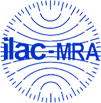Platform scales calibration

Main content
- What is a platform scale?
- Structure
- Application
- Calibration procedure
A platform scale is a type of electronic scale product with high accuracy, simple design, easy to use, with maximum load capacity from 30kg to 500kg. Scales are often used to weigh supplies, raw materials, products, and goods in production such as flour, agricultural products, fruits,...
1. What is a platform scale?
Mechanical scale is a type of scale produced for many uses in agriculture and industry. Because they are the first generation products of electronic scales, they do not have many modern features and design details like electronic bench scales, analytical scales or seafood scales,...
2. Application
- In chemistry: paints, solvents, foaming agents, pesticides, antifreeze chemicals,...
- In agriculture: disinfect ponds and lakes, kill bacteria in the water environment, oxidize organic materials and pathogens in breeding production.
.jpg)
3. Structure
Platform scales are composed of 3 basic main parts:
- Frame cover: usually made of good quality materials, resistant to impact or with additional water-resistant properties to protect the internal parts of the scale and the machine body.
- Scale head: this part is integrated with a sensor, helping the scale receive signals and process these signals to give the most accurate parameters for the product placed on the scale.
- Screen: helps display measurement results, usually LED or LCD screen
4. Why should you calibrate the chlorine meter?
- Platform scales need to understand the standards before being put into use because electronic scales that have not been calibrated will have incorrect readings.
- Platform scales imported from foreign countries need to be recalibrated when returning to Vietnam to weigh accurately. Then, when they are put into use, they will not cause damage to those using the scale.
5. Calibration procedure
- Standard weight
- Thermometer
- Auxiliary means
- When performing calibration, the following conditions must be met:
- Temperature: as the normal working temperature of the scale
- The influence of external influences (vibration, vibration, wind,...) does not distort the results
- The scale should be calibrated at the site of use
- The scale must be completely assembled, clean, and ready for calibration
- Place the scale that needs to be calibrated firmly and adjust it to balance. If the scale has a Nivo, adjust the water bubble to the midpoint of the centering line, ready for calibration.
- Gather enough standard weights and specialized test racks. The standard weight must be within the calibration validity period.
- The scale must have all necessary details, parts and accessories
- The indicator must be clear and read accurately
- The indicator must be clear, easy to read, and avoid confusion when determining weighing results. The keys must work well.
- Check the scale: When applying a load, the scale must have a change in mass on the indicator and the indicator value at the load level must be stable for 10 seconds.
- Check repeatability
- Check accuracy
The measurement of uncertainty is compiled from the following sources:
- The measurement of uncertainty of standard weights
- The measurement of uncertainty due to resolution at point "0"
- The measurement of uncertainty due to resolution at load level
- The measurement of uncertainty due to repeatability
- The measurement of uncertainty due to angular deviation
- The measurement of uncertainty due to changes in environmental temperature
- After calibration, the platform scale is stamped and issued a calibration certificate with the calibration results.
- Recommended calibration cycle: 01 year
To consult and request a quote on our calibration services, please kindly contact us via the following information:
LABORATORY: DONG TAM MEASUREMENT AND TECHNICAL TRADING SERVICE CO., LTD
Address: No.57-59 Street 11, Binh Hung Residential Area, Binh Hung Commune, Binh Chanh District, Ho Chi Minh City
TEL: 028 375 83 869 - Hotline: 0909 347 891 (Mr. Lâm)
Email: info@dongtam-mes.vn
Relative post | Xem tất cả
- Stopwatches calibration
- ORP meter calibration
- Hydrometer calibration
- Analytical and Technical balance calibration
- Analytical and Technical balance verification
- Spring dial scales verification
- Spring dial scales calibration
- Bench weight scale verification
- Bench weight scales calibration
- Platform scales verification
- Chlorine meter calibration
- Total suspended solids (TSS) meter calibration























 Legal
Legal  Call: 0283.7583869
Call: 0283.7583869  Search for Certificate
Search for Certificate  Contact
Contact